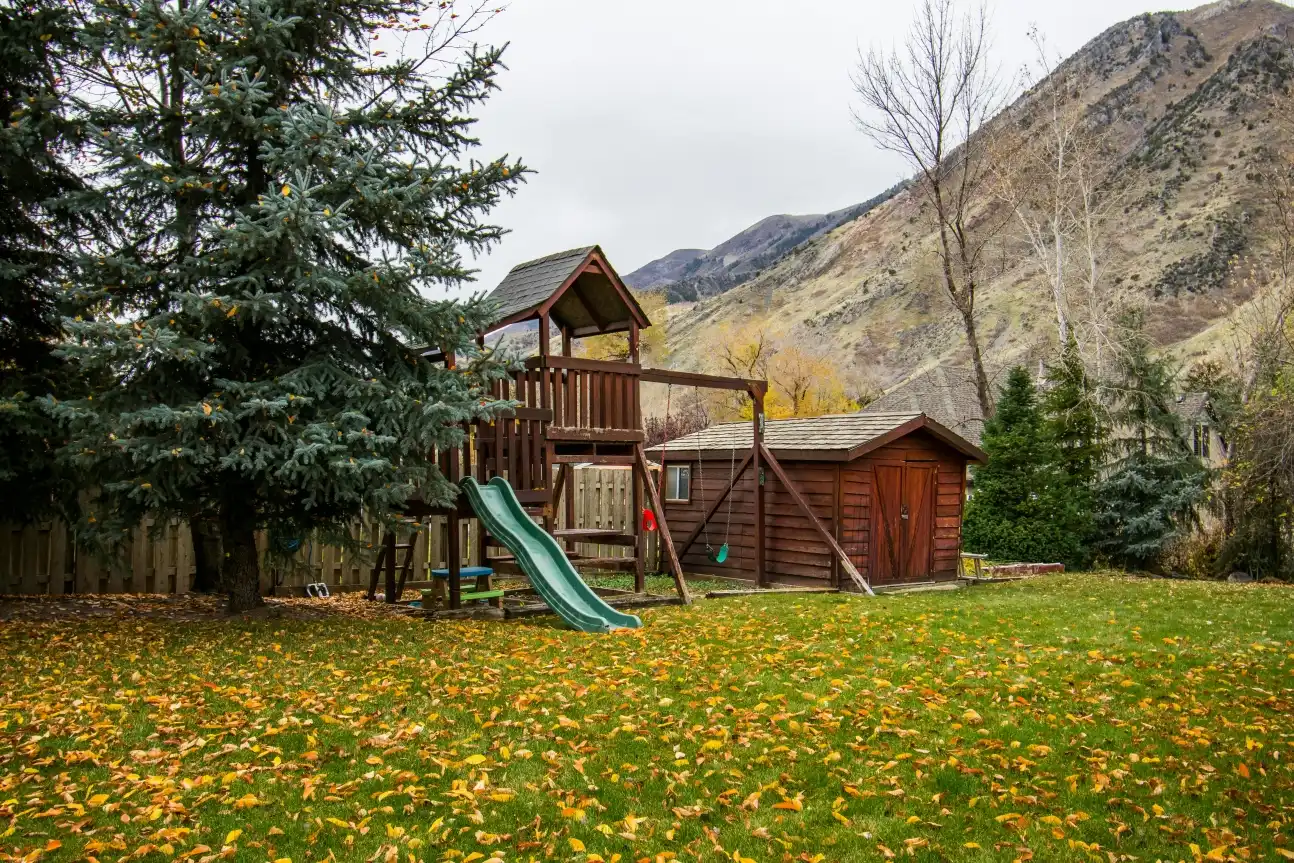I paesaggi autunnali arancioni e rossi sono bellissimi, ma le foglie cadute rappresentano una minaccia per il tuo prato? Se il tuo giardino assomiglia al mio, è difficile vedere l'erba attraverso la grande quantità di foglie sul terreno.
C'è un dibattito se lasciare le foglie cadute a terra o utilizzarle altrove. Come per la maggior parte delle cose, la soluzione migliore per il tuo giardino è personale. Ecco cosa considerare.

Da fare: rimuovere le foglie cadute dalle grondaie
Le foglie cadute dagli alberi che fiancheggiano una casa ostruiranno le grondaie, a meno che la casa non sia dotata di protezioni per grondaie. Le grondaie intasate possono causare la fuoriuscita dell'acqua piovana dai lati, causando potenzialmente danni alla fascia o al tetto della casa. L'acqua mal indirizzata potrebbe finire troppo vicino alle fondamenta, causando seri problemi.
Dovresti pulire le grondaie due volte l'anno, ma è particolarmente importante tenerle libere da foglie e altri detriti di grandi dimensioni che possono creare intasamenti.
Lascia le foglie a terra
Se non ti dispiace guardare gli strati di foglie nel tuo giardino, puoi lasciarli così come sono. Le foglie cadute si decomporranno (alla fine), aggiungendo nutrienti al tuo terreno e fungendo da pacciame che impedisce alle erbacce di crescere. Le foglie forniscono anche un ambiente in cui gli insetti possono prosperare in autunno e inverno.
Tuttavia, se vivi in un clima nevoso, falcia le foglie o passaci sopra una lama pacciamante. (Nota: assicurati che le foglie siano asciutte prima di falciarle.) Le foglie intatte raramente si decompongono entro la primavera nei climi freddi e nevosi. Invece, finiscono per creare un pasticcio fradicio che è più difficile da gestire. Romperle con un tosaerba risolve questo problema e dà alle foglie la possibilità di fertilizzare il tuo prato.
Crea un pacciame di foglie benefico
Puoi triturare le foglie con la lama di un tosaerba o con un trituratore portatile per foglie. Raccogli il pacciame in un sacco e usalo attorno a fiori, arbusti e alberi.
Rastrellali attorno a un albero
Se non hai molte foglie nel tuo giardino e vuoi un modo semplice per pulirle, rastrellale attorno a un albero. Fungeranno da pacciame per l'albero, decomponendosi e fertilizzando il terreno.
Raccoglieteli e lasciate che la città li raccolga
La maggior parte delle città ha giorni designati per la raccolta di rifiuti da giardino come foglie, erba tagliata e bastoncini. Consulta il sito web della tua città per conoscere i giorni e le regole di raccolta. Potrebbero chiedere che tutti i rifiuti vengano messi in un sacchetto biodegradabile sul marciapiede.
Some municipalities also have collection sites open year-round. Again, you must contact your local government officials or the city website for details.
Save Fallen Leaves for your Compost Pile
If you want to create organic fertilizers for your plants next year, your fallen leaves offer a great start to a compost pile. To compost fallen leaves, mow over them to break them down, collect the leaf bits, and place them in a designated area of the yard. Layer in food waste or grass clippings (anything nitrogen-rich) and turn your compost pile once per month.
Trasportare le foglie in una zona boscosa
If you want to benefit the insects and wildlife in the area, consider transporting the leaves from your yard to the woods. (This works best if you have some wooded area on your property.)
Make Leaf Mold (An Organic Fertilizer)
Leaf mold is an organic fertilizer that increases soil moisture retention by up to 500%. It consists of a wide variety of decomposed leaves. Once fully decomposed, they turn to a brown, crumbly substance with an earthy smell.
Pile leaves on the ground or in a plastic trash bag to make leaf mold. (If you use a trash bag, poke holes in it to provide airflow.) Wet the leaves with a water hose about once per month or whenever dry. After 1-2 years, the leaves will turn into leaf mold, and you can use it in your garden or flower beds
If you like our page please share with your friends & Facebook